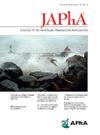HMG Co-A reductase inhibitor medication management in American Indians with type 2 diabetes: A multiyear view from a rural tribal health system
IF 2.5
4区 医学
Q3 PHARMACOLOGY & PHARMACY
Journal of the American Pharmacists Association
Pub Date : 2025-08-07
DOI:10.1016/j.japh.2025.102494
引用次数: 0
Abstract
Background
American Indian peoples have the highest prevalence of diabetes among all racial and ethnic groups. Atherosclerotic cardiovascular disease (ASCVD) is the leading cause of morbidity and mortality in people with type 2 diabetes. Lipid management, including statin medications, is recommended to reduce the risk of ASCVD for patients with type 2 diabetes.
Objectives
We described statin medication dispensing patterns and analyzed adherence trends by age group and intensity of statin therapy within the Choctaw Nation Health Services Authority (CNHSA) type 2 diabetes patient population. Our second objective was to compare the frequency and timing of lipid panels to current guidelines.
Methods
This was a retrospective secondary analysis of CNHSA electronic health record data from 2017 to 2021 of patients who used CNHSA services and pharmacies. The adherence analysis included patients who were dispensed statins for >180 days. Patients were stratified based on age and statin intensity. The lipid panel analysis included labs obtained yearly and 4-12 weeks after a statin adjustment.
Results
Of the 8330 CNHSA patients with diabetes medication, 69.6% were prescribed a statin. Of those, 45.0% were dispensed moderate-intensity statins exclusively; 23.7% were on high-intensity statins only. The age <40 years group had the lowest adherence with mean proportion of days covered 0.69 (0.22). Yearly labs were completed for 85% of the patients in year 1 after first statin dispense and 80%, 77%, and 71% in subsequent years. Of the patients with adjustments, 13% had a follow-up lipid panel within 4–12 weeks after the first adjustment.
Conclusion
Statin medications were used by a large percentage of CNHSA patients with type 2 diabetes. Statin adherence was lowest in the younger age groups (<40). Our findings provide insight into statin use, adherence, and laboratory findings. Future studies should examine barriers to adherence specific to the larger CNHSA population.
美国印第安人2型糖尿病患者的降脂药物管理:来自农村部落卫生系统的多年观察
背景:美洲印第安人是所有种族和族裔群体中糖尿病患病率最高的。动脉粥样硬化性心血管疾病(ASCVD)是2型糖尿病患者发病和死亡的主要原因。脂质管理,包括他汀类药物,被推荐用于降低2型糖尿病患者ASCVD的风险。目的:我们描述了他汀类药物配药模式,并分析了Choctaw国家卫生服务管理局(CNHSA) 2型糖尿病患者按年龄组和他汀类药物治疗强度的依从性趋势。我们的第二个目标是比较脂质面板的频率和时间与目前的指南。方法:回顾性分析2017-2021年使用CNHSA服务和药房的患者的CNHSA电子健康记录(EHR)数据。依从性分析包括服用他汀类药物100 ~ 180天的患者。患者根据年龄和他汀类药物强度进行分层。脂质面板分析包括每年和他汀类药物调整后4-12周的实验室数据。结果:在8330例CNHSA糖尿病患者中,69.6%的患者使用了他汀类药物。其中,45.0%的患者只使用了中等强度的他汀类药物;23.7%的患者仅服用高强度他汀类药物。年龄< 40岁组的依从性最低,平均PDC为0.69(0.22)。85%的患者在第一次他汀类药物分配后的第一年完成了年度实验室,随后的年份分别为80%,77%和71%。在接受调整的患者中,13%的患者在第一次调整后的4-12周内进行了随访的血脂检查。结论:很大比例的CNHSA 2型糖尿病患者使用他汀类药物。他汀类药物依从性在年轻年龄组(< 40岁)中最低。我们的研究结果为他汀类药物的使用、依从性和实验室结果提供了见解。未来的研究应该检查更多CNHSA人群的依从性障碍。
本文章由计算机程序翻译,如有差异,请以英文原文为准。
求助全文
约1分钟内获得全文
求助全文
来源期刊
CiteScore
3.30
自引率
14.30%
发文量
336
审稿时长
46 days
期刊介绍:
The Journal of the American Pharmacists Association is the official peer-reviewed journal of the American Pharmacists Association (APhA), providing information on pharmaceutical care, drug therapy, diseases and other health issues, trends in pharmacy practice and therapeutics, informed opinion, and original research. JAPhA publishes original research, reviews, experiences, and opinion articles that link science to contemporary pharmacy practice to improve patient care.

 求助内容:
求助内容: 应助结果提醒方式:
应助结果提醒方式:


